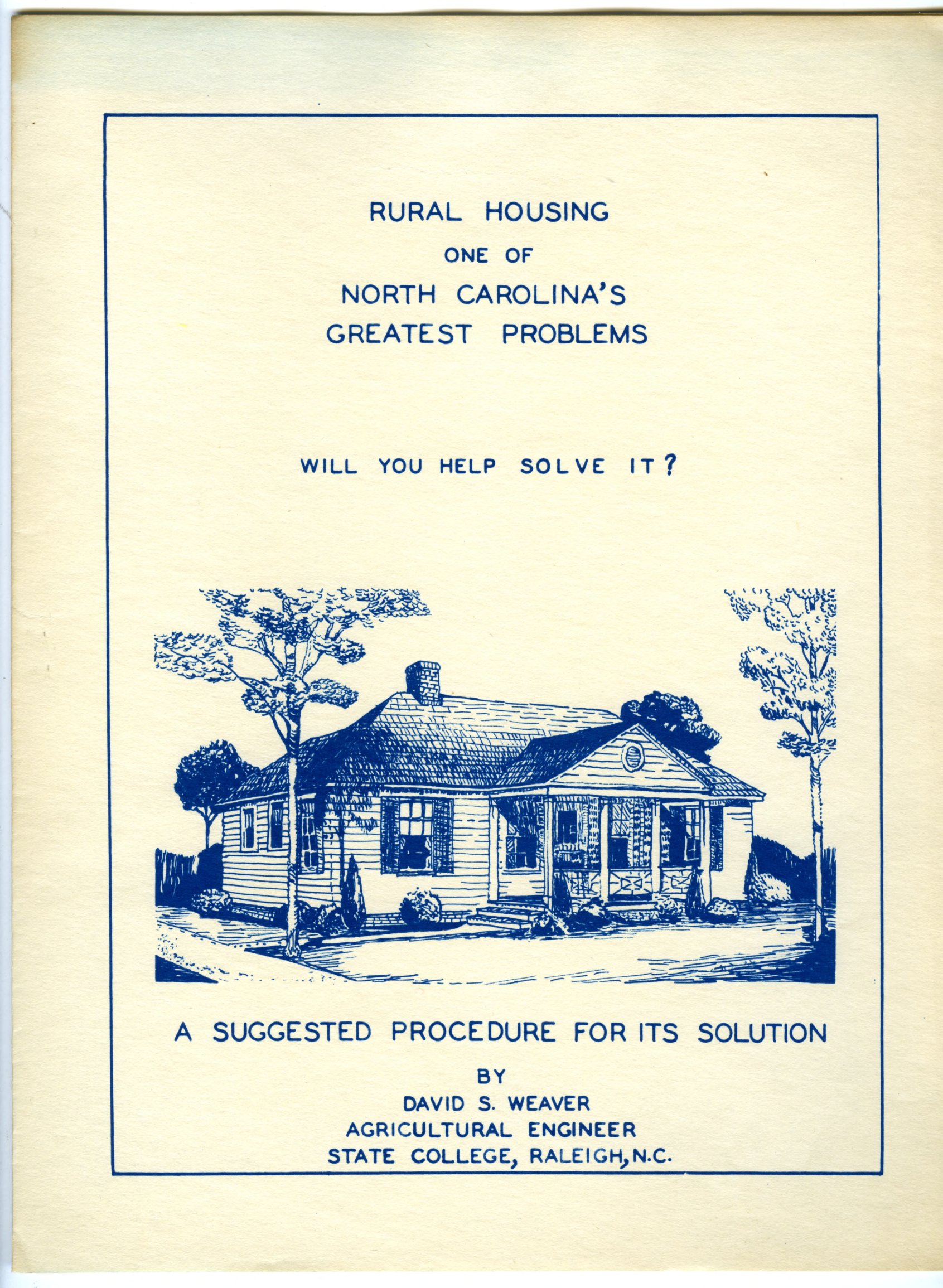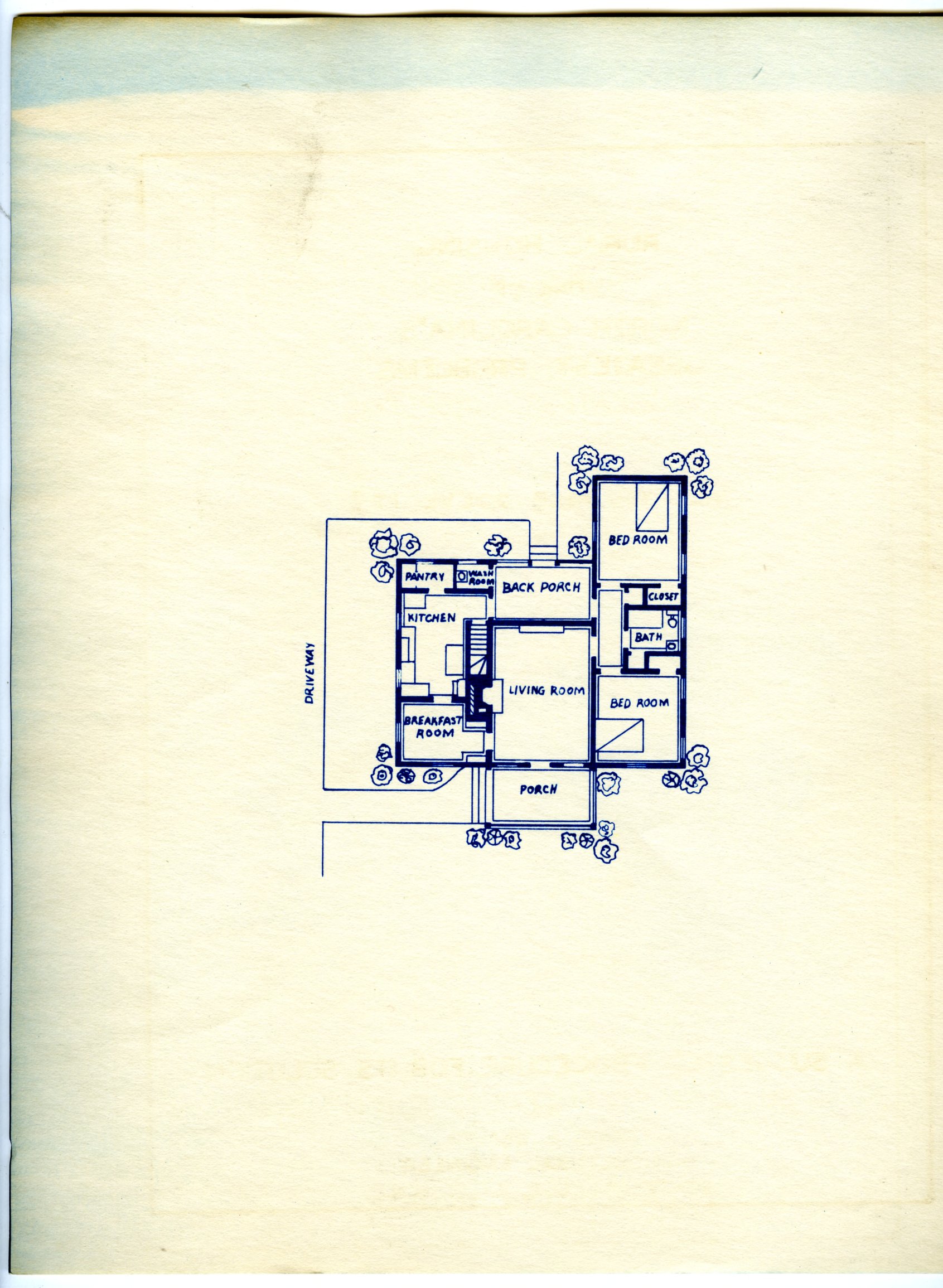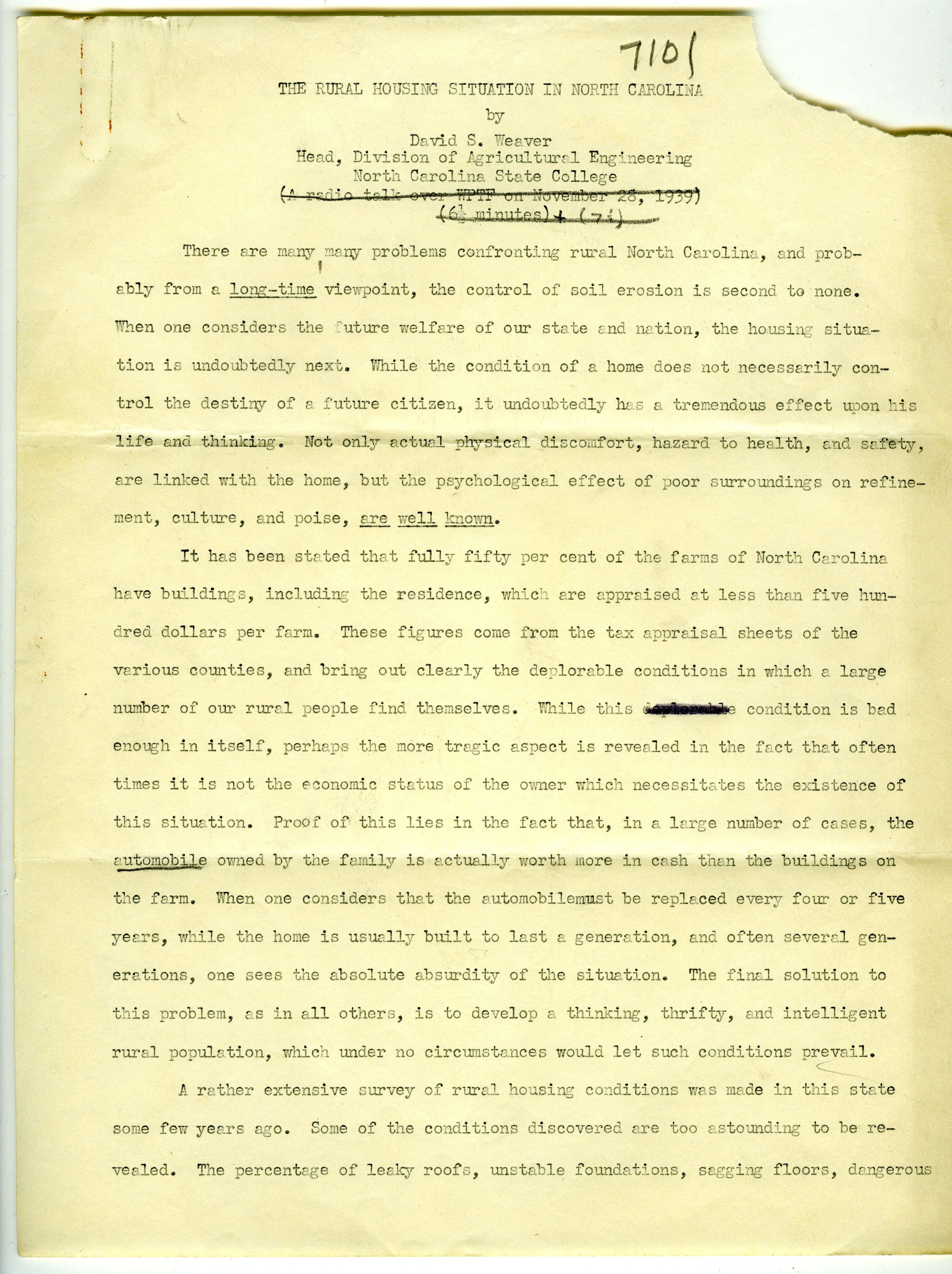Special Collections Research Center Teacher Resources: Lesson Guides: Rural Housing

Rural Housing: Argument Assessment
This lesson plan focuses on efforts to improve the quality of housing for residents of rural North Carolina in the 1940s and 1950s. It asks students to consider the author of a radio address given during this time about the issue viewpoint and analyze the points and quality of his argument. The guide includes primary sources for students to read and discuss. To view primary source materials beyond those provided here on this topic, please visit d.lib.ncsu.edu/collections.
This lesson guide adheres to the Common Core Reading Standards for Informational Text, Grade 8, specifically standards 1, 2, 5, 6, and 8. It also adheres to the Reading Standards for Literacy in History/Social Studies for Grades 6-8, specifically 1, 2, 4, 5, and 6.
Are you using these materials in your classroom? If so, please let us know by emailing us here!


Background
Following rural electrification of farm homes across North Carolina, David Weaver, who was the director of the state-wide Rural Electrification Survey, secretary of the North Carolina Rural Electrification Authority, and Rural Electrification Specialist of the North Carolina Agricultural Extension Service, began to focus on improving the houses of farmers in North Carolina. Weaver saw the farm house as not only a home, but the center of business for the farm as well, and believed that it was an economic issue that farmers have better houses.
In the winter of 1935, a Federal Farm House Survey was conducted across 46 states. The survey was financed by the New Deal agency the Civil Works Administration and administered by the Bureau of Home Economics in cooperation with the Extension Service, Bureau of Agricultural Engineering, and the Office of the Secretary of Agriculture. In North Carolina, 10% of all farm houses were visited or 28,205 total. The farmhouses were in 12 counties in North Carolina. The survey found many deficiencies with the farmhouses, including 72% of the houses having poor foundations, 66% having nowhere to store fresh food, and over 75% of households had to carry water into their house for use, there was no running water into the house. 33% had no toilet facilities and only 9% had any electricity to their home.
Weaver wanted to put together a group of people from around North Carolina to try and help solve this problem. He felt that a group composed of representatives from farmers’ organizations, the Agricultural Extension Service, Vocational Agricultural Education, Agricultural Publications, and the public school system could come up with good ideas for how to solve the problem and put those ideas into practice.
Discussion
Weaver did a lot of outreach to the public while trying to get people around the state involved in improving the rural housing in North Carolina. One way he reached out was by going on the radio and talking about the problem and his plan. Below is a transcript of a talk he did on the radio in 1939.

After reading the talk he gave, discuss the following questions:
-
Why and how is rural housing a problem in North Carolina, according to David Weaver?
-
What are the differences between urban or city houses and rural houses?
-
What solutions for the problem does he propose? What does an ideal farm house consist of according to David Weaver? Do you agree? Do you think there other things that should be in an ideal farm house?
-
How does a problem with rural housing relate to agriculture in North Carolina?
To read more about the rural housing problem in North Carolina during the 1930s and 1940s, visit more materials from David S. Weaver’s collection here and here.
To view a print version of the primary sources, click here.
Return to home.
